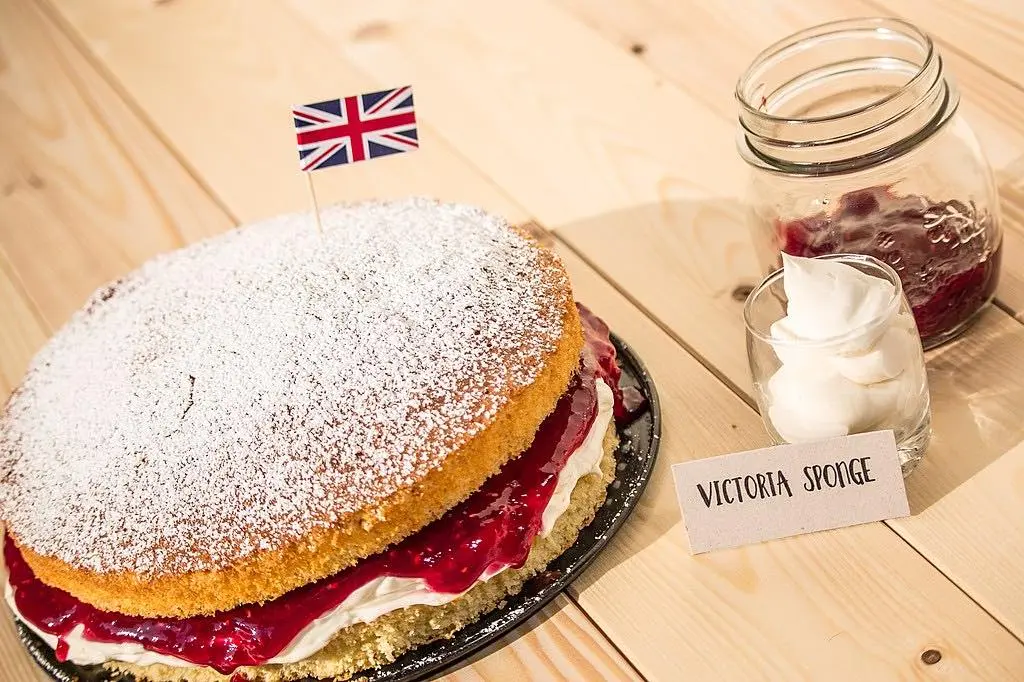Victoria Sponge Cake - A Timeless Classic in British Baking
The Victoria Sponge Cake, also known as the Victoria Sandwich or Victoria Sponge, is a classic British cake that originated during the Victorian era. Here’s some information about this beloved cake:

History
The Victoria Sponge Cake is named after Queen Victoria, who reigned over the United Kingdom from 1837 to 1901. It is said to have been one of her favorite cakes, and she would often enjoy a slice with her afternon tea. The cake became popular during the Victorian era and has remained a staple of British baking ever since.
Characteristics
- The Victoria Sponge Cake is a two-layer cake made with a simple yet delicious combination of buttery sponge cake layers and sweet jam filling.
- The cake layers are typically made with equal parts of butter, sugar, eggs, and self-raising flour, resulting in a light and fluffy texture.
- The two cake layers are sandwiched together with a layer of strawberry or raspberry jam. Some variations also include a layer of whipped cream.
- The top of the cake is usually dusted with powdered sugar for a simple and elegant finishing touch.
Facts
- The traditional Victoria Sponge Cake does not usually include any frosting or icing on the outside, allowing the simplicity and flavor of the cake and jam to shine through.
- It is often served as a centerpiece dessert during afternoon tea or as a celebration cake for birthdays, weddings, and other special occasions.
- The Victoria Sponge Cake is a versatile recipe and can be easily customized with different flavors of jam or even fresh fruit slices added between the layers.
- Variations of the Victoria Sponge Cake include adding vanilla extract or lemon zest to the cake batter for extra flavor.
- The cake is best enjoyed on the day it is made, as the moist sponge tends to dry out after a day or two.
The Victoria Sponge Cake is a timeless classic in British baking, loved for its simplicity, lightness, and delightful combination of flavors. Whether enjoyed with a cup of tea or served as a celebratory treat, this cake continues to be a beloved part of British culinary tradition.